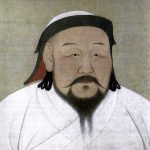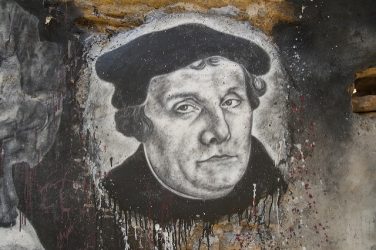Time for another slice of Europe’s history, garnered with the fragrant aftertaste of Europe’s first corporation. Join us for a journey to 1119 to see the founding of the Knights Templar, poor soldiers of Christ, who made a fortune from servicing angry white males in armor. Also, if you like our take on history check previous episodes here, here and here.
That is one of E&M’s long reads. It is long because history is long. Don’t be such a whiner and read it. It is worth it.
CHAPTER IV: 1119
The backdrop
As any beautiful story this one starts with – you guessed it – a toilet. The lavatory in question, however, was in many ways unique. It was so effluvious and rancid that the intrepid few who attempted defecation in the Gehenna risked losing limbs from the contagion. Forget the feces-laden beaches of the Third World: this was something else. An entire unhinged plane of decrepitude, where the horrors of incontinence mixed with the vapid fumes of the devil’s worst designs. The reek was inescapable, constant and indiscriminate: it accompanied the poor and the wealthy through their life endeavours, and continued to upset their peace in death. Love, war, the pursuit of food and knowledge were all marked by the unmistakable century-old miasma of human waste. Nobles had the mess vigorously cleaned for them and struggled to procure magic concoctions that would cover up the smell. But even they could not avoid the tight grip of medieval Europe – hell’s own toilet.

Indeed, Europe around the 1100s was not all roses. Peak Middle Ages were as shady, foul and morally unsavoury as any reference to these gap centuries would suggest. Yet, not all of it was bad. Commoners were of course hungry and dull, but when have they not been? Migrants, Europe’s perennial scourge, were at bay, internal strife dialed down to sanitary levels and, somehow beating the pestilence of poor hygiene, population grew. This led to the establishment of the first neo-liberal order on the continent.
A caste of traders and craftsmen took shape in the cities, biting into modernity and leaving behind scum, such as foreigners and peasants. The forming bourgeoisie tapped into newly introduced freedoms and privileges as flies relishing on cow manure. With rulers off their backs, burghers increased their wealth. Losers on the other hand were left to the devices of feudal landlords. And for the most part those were immaculately impervious to the idea of extending the fruits of prosperity to lowlifes.
Crusades
The unprecedented socio-economic upswing opened room for Europeans to focus on what they do best – conquest and pillage in the lands of those they don’t like. A leader in this was the church, which felt it could use its sway to run a few errands, such as establishing total control over fools, killing off the heretics and making angry white males fight elsewhere, as they were disrupting business. The clergy has been looking for a way to communicate God’s love to infidels for a long time and were particularly thrilled to receive a distress call from the Emperor of Byzantium, who was worried the termites were nibbling away his pigsty.
Sensing the commotion, Peter the Dullard, a hermit and part-time proselytizer, bridled his equine lover and zipped off to Jerusalem with a band of peasants, whom he personally scooped up from the lowest establishments of Europe.
Not that disciples needed much to embark on whatever conquest would bring around some fresh cash. Sensing the commotion, Peter the Dullard, a hermit and part-time proselytizer, bridled his equine lover and zipped off to Jerusalem with a band of peasants, whom he personally scooped up from the lowest establishments of Europe. Eager but dim, these proto-Nazis initially ran into a navigation quagmire that saw them heading North instead of South. They had gone as far as the Ural when they realised something was off by the way the locals looked at them. Eventually they turned back and pissed by their own ineptitude staged a pogrom on Jews, setting the foundations of what would become a revered European tradition. After a few weeks of running in circles the wannabe crusaders were shown the way by an old man at the side of the road in exchange of a few hard knocks on the back. By the time they reached their target the church had already sent a second company, which they hoped won’t flounder so stupendously.
It is said that when the Muslim nobles saw these wretched creatures at their doorstep for the first time they started crying uncontrollably. Never had they ever believed human beings could subsist in such dire conditions. But they gave them a good whipping anyway, just to make sure they will not be forced to see their ugly faces again.

However, it was not long before they understood why the abominable crooks had crossed so many miles to pay a visit – rapacious savages with crosses were no menace to ignore. Soon, more and more of those dolts started pouring in from all corners of Europe, sharper dressed but no less rotten. The Seljuqs were eventually outnumbered by at least three to one and, unable to keep their ground, succumbed to raving imbecility. By 1099 the clowns had captured Jerusalem.
Knights Templar
It is at about that time that a man named Hugh of Pain, a refined knight who had spent the good part of his life in suffering over excretion issues, decided he has had it with overflowing outhouses. He wanted a real toilet, made of marble and gold, with running water and a copy of the morning paper. A sanctum of sorts where a man of stature could rest and ponder over the events of the day, unperturbed by the odds of suffocating on their vomit. Hugh even had little something of a business plan to turn his passion into an income-generating practice and had the marketing ready. He conceived of a chain of stark white-walled latrines marked with a red cross for quality and branded with a catchy name to attract customers: “Hugh’s Pain Relief”.
He wanted a real toilet, made of marble and gold, with running water and a copy of the morning paper. A sanctum of sorts where a man of stature could rest and ponder over the events of the day, unperturbed by the odds of suffocating on their vomit.

Desires of such order brought Hugh of Pain to Jerusalem about twenty years after it was captured by the soldiers of Christ, in 1119. It had all started in a back alley, where an odd looking gentleman blessed Hugh with chlamydia and a strange account of one’s travels to God’s own dominion.
The drifter recalled that one night while dragging in the Holy city she was caught up with a particularly flamboyant group of devotees who went straight for one of the city’s hottest worship joints. There, deep into the sparsely lit and steamy bathhouse, stood a lavatory of unparalleled grandeur welcoming the most unadulterated of souls. So venerable was this site and so pristine that none of the visitors dared even look at the marvel, much less lay their filth in it.
3 years later a brooding emaciated bindle approached the gates of Jerusalem and asked for soda. The guards beat him really well (as was the custom in those days) and signed him up for early execution on the next morning. Not until Hugh gave all his remaining gold to the Christian brothers and showed his knight credentials did the guardian angels cut him loose in the city’s underbelly.
After going through a similar check-in procedure at the door of the temple the vagrant had pointed (albeit substituting gold for hard love), the knight inquired about the whereabouts of the coveted lavatory of arcane beauty. Unfortunately, the warden was not aware of any specific venue for bodily relief within the grounds of the shrine, as far as he was concerned people defecated in buckets as usual. However, the temple did contain a chest full of religious trinkets belonging to the previous owners, dating as far back as the days of King Solomon.
Having no valuables left to offer Hugh had to succumb to the warden’s lewdest obsessions, the servicing of which left the knight completely unsure of one’s position on the male-female spectrum. Yet, he was finally let to lay his gaze on the object of his passion. And it took just a glimpse for Hugh to understand that this was what he became Jerusalem’s little bitch for. “That is it”, he said to himself, “that is God’s ultimate gift to humanity”.
Filled with reverie Hugh went to King Baldwin of Jerusalem, an old libidinous buffoon, whom he implored to stay and guard the chest with his life, along with the temple it stood at. Baldwin was reluctant at first, as he believed that was not just some old box, but the Ark of the Covenant. Not until Hugh went back to Europe and returned with an entourage of the most profligate male companions did Baldwin agree. The Ark’s contents were swiftly emptied in a sewer, save for some parchment to use as wipes, a scepter to scour hard residue and a pot of lube. The accomplices were knighted as Guardians of the Temple or Knights Templar.
Impact on Europe

One thing led to another and in just a few centuries the empire Hugh had dreamed of took full shape. The freshly established order grew and new superior toilets popped all across Europe, with a side service providing carnal pleasure at only three deniers during happy hour. With the proceeds the order bought land, on which they built more toilets, plus accompanying amenities such as bars and hospices. As the crusades were going strong weary knights needed respite and someone to take care of their property while they caved in infidel skulls on the battlefield. The network of establishments created by the Templars was in a unique position to accommodate these demands. They started issuing papers for the consigned property that the returning warriors could cash in at any of the Templar’s facilities. And if they did not return the better. Huge wealth started pouring in this primitive banking system at non-existent anti-money laundering procedures, no taxation and no regulatory scrutiny to meddle into its affairs. It was heaven on Earth for the Templars and their friends.
As the crusades were going strong weary knights needed respite and someone to take care of their property while they caved in infidel skulls on the battlefield. The network of establishments created by the Templars was in a unique position to accommodate these demands.

Of course this ground-breaking progress did not stay unnoticed. Kings on the continent were progressively worried of the kind of power wield by the Knights Templar. According to at least few verified street sources the brotherhood had crossed over into bestiality and witchcraft. Plus, they had more cash than any royalty, which could fit neatly in state coffers, but more importantly could finance any wacky plan, including forming an own state. Finally, the created chain of establishments only worked while there were raving males travelling back and forth in search of occasions to fight. Once the crusades started waning and worriers revolved back to regular domestic abusers the Templars simply ran out of customers. Thus, one beautiful day in the 1300s Pope Clement the Syphilitic shut them down on polite request by King Phillip the Nice. Accordingly, the Templar’s archives containing information on what they owned disappeared without a trace.
The delicate aroma of the Knight Templar superior toilets, however, lingered on through the centuries. The created empire was the first successful attempt to profit on catering to people’s needs, financial or otherwise, by building an international network of branded facilities. Unlike modern corporate behemoths, the Templars were unlucky to live in times when the government could dissolve a company and swallow their assets. Another important gift to Europeans left by the Templars is the fact that rich people gather in secret societies to do horrendous things behind closed doors. An image the brotherhood had carefully cultivated for marketing purposes. The use of fake news for political gains is also understood to have originated during the demise of the Templars, when they admitted to have practiced heresy at the hands of the King’s finest torturers.
Cover photo: Binomialphoto, CC BY-NC-ND 2.0 (Flickr)










